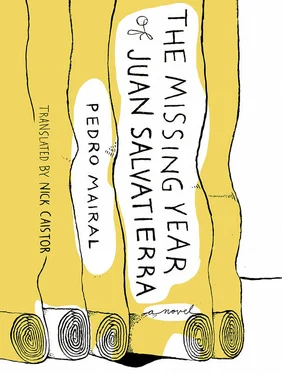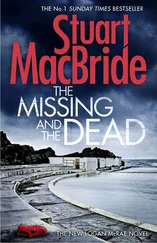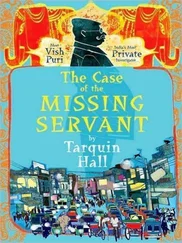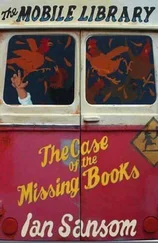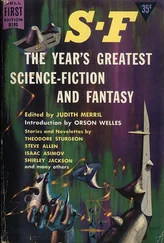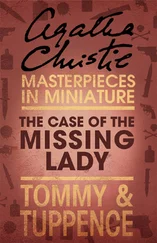Frequently it happens that when I see something I know how he would have painted it. I see figs in a bowl and imagine how Salvatierra would portray them. I spot a tree, a gray-blue eucalyptus for example, and see it as if it were his creation. Or people (this usually happens to me in gatherings after I’ve had a couple of drinks): I sometimes see them as if in oils, boldly colored, with red and yellow faces, Cubist guffaws, or making a gesture he would have caught, a way of tilting their face, crossing their legs, or sitting.
It may seem as though this is my own artistic gaze I never had the courage to develop. But I never had any wish to paint. I always felt as if there was nothing he hadn’t done. I remember that when I was ten I showed him a scribble I had drawn of submarines and rockets. I was proud of the result. A week later I went into the shed and found a gigantic, brightly-colored submarine and rocket depicted on his canvas. Rather than thinking he had copied them from me, my sensation was that I had copied him without realizing it.
As an adolescent I would often dream I was embracing a naked woman. I clung to her out of fear that she would change into something else. But I squeezed her so tight she began to soften, to crumble into colors. If I caressed her arm, the skin would start to smudge, and beneath I would see a blue, sticky color. I would let go of her and she would start to melt. Terrified, I would grow desperate, smear her against the sheet as if trying to kill her, as if trying to reach her, until she was no more than an impossible, beautiful, two-dimensional figure, painted forever on the canvas.
Finding the missing roll was something I needed to do so that my father’s work would not be infinite. If one part was missing, I wouldn’t be able to take it all in, to know it in its entirety. There would still be mysteries, things that Salvatierra had perhaps painted of which I knew nothing. But if only I could find it, this world of images would have a limit. The infinite would reach an end, and I could discover something he hadn’t painted. Something of my own. Yet these are interpretations I’m making now. Back then I was simply obsessed with finding the roll; I didn’t even think about these things.
By the time I reached the shed I was out of breath. Boris and Aldo had already gone. I opened the bottle of whiskey I’d bought for Jordán. I took a couple of swigs and started searching through the shelves and crates. I found a Japanese drawing Doctor Dávila had given Salvatierra. It was a long drawing on a scroll, where each scene was linked to the one before it, and in turn provided the inspiration for the ones that followed. Salvatierra must have been fascinated by that.
I found brushes my father had made from the hair of all kinds of animals. The broadest ones were made from the horse tails we got at the auctions of old mares where they sold bags of horsehair by the kilo. For medium brushes, Salvatierra would use hair from the inside of cows’ ears. We would go and get them from Lorenzo the butcher on Tuesdays, when he was slaughtering. More delicate brushes were made from river otter bristles, brought by an old trapper called Ceferino Hernández in exchange for a bottle of Trenzas de Oro red wine. The finest brushes, used to paint the figures’ hair, blades of grass, or gossamer threads, consisted of the fur from black cats we neighborhood kids would fling stones at from time to time, or from the tiny feathers collected from the floor of the cages out in the yard where Luis kept a canary, cardinal or finch. Salvatierra would make the handle of the brush from a length of bamboo cane. He would put the hairs into a funnel to shape them, carefully cut the top end and then, when they had been fastened and glued together, push them into the cane. That was how he made his brushes.
Aldo came to shut up the shed. I asked him to help me get a few of the rolls down. I queried him about how many years exactly he had worked with my father, and calculated that Salvatierra must have worked alone, without help, for about ten years. We lowered several rolls from that period, and some later ones from the eighties. When Aldo left, I spent a while gazing at a roll completely given over to portraying the seasons. There were no people in it, except for occasional tiny figures flitting through the background of the landscapes. The scenes progressed from the white light of summer siestas to the time of April showers, from flooded winter fields to trees bursting with fresh, almost phosphorescent leaves. If I’m not mistaken, he painted this in 1962, the year President Frondizi was toppled by a coup. Whenever he was disillusioned with politics — or humanity in general — Salvatierra used to paint these empty landscapes, as if wanting to get away to a place where the links with other human beings would be reduced to a distant wave.
Another roll I had never seen began with a train. Seated gazing out of the window in the last carriage was a skinny, melancholy-looking adolescent. Was it me? It looked a lot like me. The youth was saying goodbye to someone, a nervous smile on his face. Yes, it was me. I recognized myself as if in an old photo that I was unaware had been taken. My father had painted me exactly as he saw me the morning he accompanied me to the station with mom. Further on, the grass and the train became blurred because the train was in motion, and I appeared at the other windows of the carriage. In one, I was eating a sandwich. In another, I was asleep with my head against the window, while opposite me sat a naked young girl, as if she were my own dream. I was astonished Salvatierra should think so intensely about me. Astonished to see myself through his eyes, because it was obvious how much it had hurt him to see me leave. I felt that he was talking to me through his painting, bridging the enormous silence that had existed between us. Now he was talking to me with the love in his painting, saying things he had never been able to say.
I drank some more Chivas. I don’t know how much, because I was drinking straight from the bottle. A little more. What exactly had happened during those years? Luis had left for Buenos Aires first, and I had followed not long afterwards. I was supposed to be going away to study, but above all I wanted to escape from Barrancales, from home, and most of all from the painting, from the vortex of the painting that I felt was going to swallow me up forever, like an altar boy destined to end up as chaplain in that huge temple of images and endless duties with the canvases, pulleys, colors… Salvatierra had painted my escape as though wanting to protect me, because the train windows later became those of the faculty building, and there I was again, his younger son, absent-minded in the midst of other students, a flock of parrots fluttering round my head. Through another window I was sitting with Luis at the table in our boarding house. Luis seems happy, and is pouring himself a glass of what looks like beer; I am smoking. How did Salvatierra know I had started smoking? He must simply have imagined it, and painted his son as having already got away from him, doing things over which he had no control. This was him keeping an eye on the two of us, wanting us to have an easy student life, free of danger. Since he listened to the radio, he heard about what was going on at university in those days. He must have been most worried about Luis, because he was flirting with being a Peronist militant. He knew that because I used to refer to him (until it became dangerous to do so) as “my Peronist brother.” But Luis didn’t really have strong political convictions: he was active for a couple of years to set himself apart from dad’s inclination to support Frondizi, and to be accepted by a group of friends in the capital. He drifted away from militancy well before the most violent years.
Читать дальше
